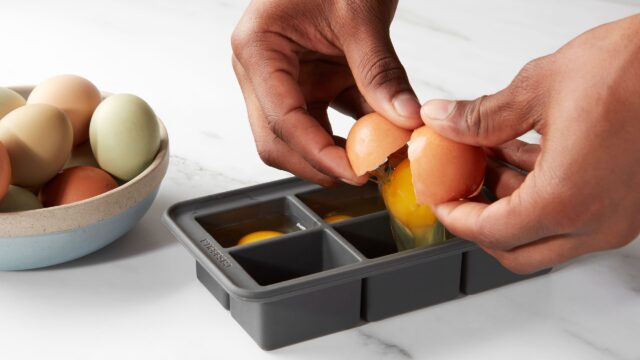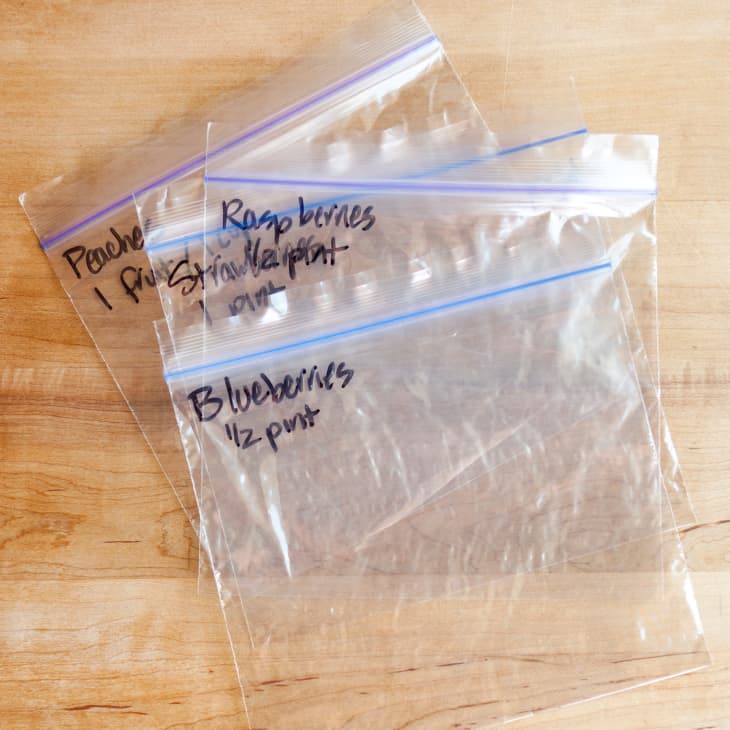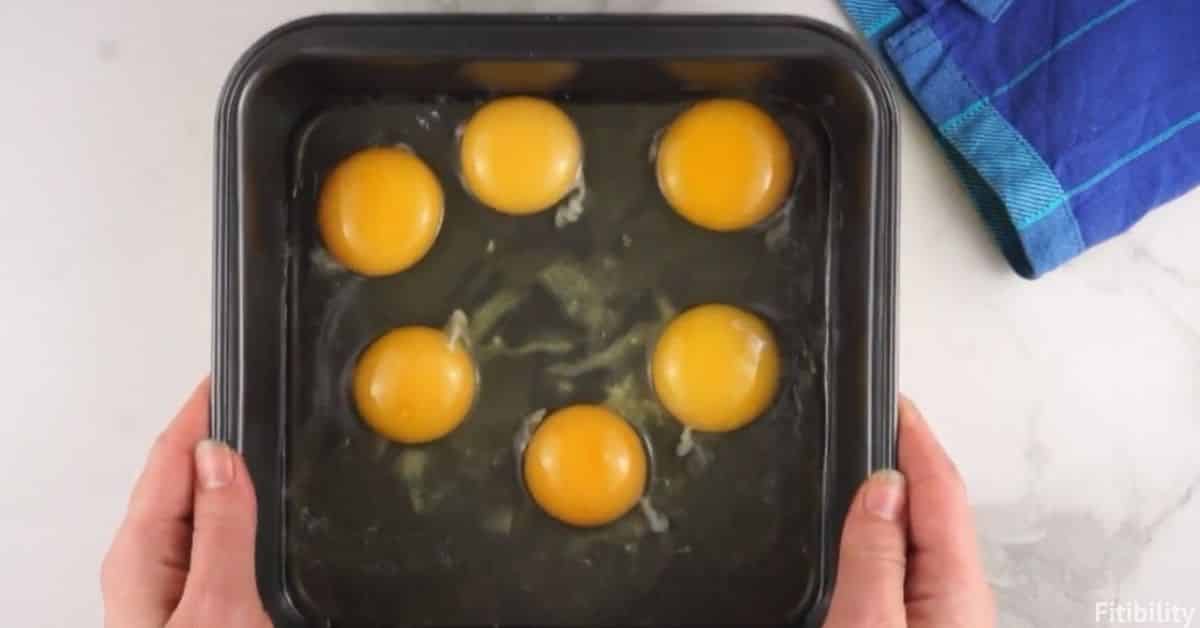
It’s a busy Monday morning, and you’re rushing to get yourself and your family ready for the day ahead. The last thing you have time for is standing over a hot stove, whisking eggs and flipping omelets.
But what if I told you there’s a way to enjoy a delicious and satisfying breakfast without the morning rush? Yes, you heard it right – you can freeze scrambled eggs!
Whether you’re a parent looking for convenient meal options, a meal prepper seeking to save time, or someone who simply loves the idea of having a hearty breakfast at a moment’s notice, this is a game-changer.
Get ready to revolutionize your mornings and discover the secrets of freezing scrambled eggs done right.
Benefits of Freezing Scrambled Eggs

This quick solution offers numerous benefits, making it a practical option for those with busy lifestyles or limited time for meal preparation.
1. Meal Preparation and Convenience
One of the main advantages is the convenience it provides. By preparing a large batch of scrambled eggs ahead of time and freezing them, you can have a ready-to-eat meal whenever you need it. This is particularly useful for busy mornings or when you’re short on time but still want a nutritious breakfast.
2. Retaining Nutritional Value and Flavor
Contrary to popular belief, freezing scrambled eggs does not significantly affect their nutritional value. The essential nutrients and protein content remain intact even after freezing. Additionally, when properly frozen, they retain their delicious flavor, allowing you to enjoy a satisfying meal every time.
Importance of Proper Freezing Techniques to Maintain Quality

Maintaining the quality of the eggs is crucial to ensure a pleasant eating experience later on. Improper freezing techniques can result in freezer burn, texture degradation, and loss of flavor.
By adhering to the right methods, you can preserve the nutritional value and flavor of your eggs.
How to prepare them for freezing?
Before you can freeze scrambled eggs, it’s essential to prepare them correctly. Follow these step-by-step instructions to achieve the desired doneness and enhance the flavor.
Step 1: Cooking to the Desired Doneness
Start by cracking fresh eggs into a bowl and whisking them until the yolks and whites are fully combined. Heat a non-stick skillet over medium heat and add a small amount of butter or oil. Pour them into the skillet and gently stir with a spatula, ensuring even cooking. Continue cooking until they reach your preferred level of doneness.
Step 2: Seasoning Options and Additions for Enhanced Flavor
To elevate the flavor, consider adding various seasonings and additions. You can experiment with herbs, such as chives, parsley, or dill, for a fresh and aromatic twist. Additionally, grated cheese, diced vegetables, or cooked bacon can bring extra texture and flavor.
Step 3: Cooling and Portioning
Once the scrambled eggs are cooked to perfection, remove them from the heat and allow them to cool completely. It’s crucial to cool them quickly to prevent bacterial growth. Once cooled, portion them into individual or family-sized servings, depending on your preferences and meal plans.
Proper Packaging
Proper packaging is vital to maintain the quality and prevent freezer burn when freezing scrambled eggs. Consider the following guidelines when selecting containers or freezer-safe bags.
Recommended Containers or Freezer-Safe Bags for Storing
Choose containers or bags specifically designed for freezer use. These should be airtight and made of materials that are resistant to low temperatures. Opt for BPA-free plastic containers or heavy-duty freezer bags to ensure the eggs remain fresh and uncontaminated during storage.
Tips on Removing Excess Air from the Packaging
To prevent freezer burn and maintain the quality of the eggs, it’s essential to remove excess air from the packaging. For containers, press a sheet of plastic wrap directly onto the surface them before sealing with the lid. When using bags, squeeze out as much air as possible before sealing tightly.
Labeling and Dating
To stay organized and easily identify your frozen scrambled eggs, remember to label the containers with the date of freezing. Use permanent markers or freezer labels that can withstand cold temperatures and won’t smudge or fade over time. This simple step will save you from the guessing game later on.
It’s freezing o’clock!
Now that your scrambled eggs are prepared and properly packaged, it’s time to place them in the freezer.
Find a suitable spot in your freezer and make sure it is set at the optimal temperature for freezing food, usually at or below 0°F (-18°C). Arrange the containers or bags in a single layer to facilitate faster freezing. Avoid overcrowding the freezer to maintain proper airflow and ensure even freezing.
Thawing
When you’re ready to enjoy your frozen eggs, it’s essential to thaw them safely to preserve their texture and taste. Here come some techniques.
The best way is to transfer them from the freezer to the refrigerator the night before you plan to use them. Allow them to thaw slowly and evenly in the refrigerator overnight. This gradual thawing process helps retain moisture and prevents any potential texture changes.
Quick Thawing Methods for When Time Is Limited
If you’re short on time, you can employ quick thawing methods. Place the frozen eggs in a microwave-safe container and use the defrost setting at a low power level. Remember to stir them occasionally to ensure even thawing. Alternatively, you can thaw them in a sealed bag in a bowl of cold water, changing the water every 30 minutes until thawed.
Different Methods for Reheating
There are several methods you can use to reheat frozen scrambled eggs:
Stovetop: Transfer the thawed eggs to a non-stick skillet and heat over medium-low heat. Stir occasionally to prevent sticking and cook until heated through.
Microwave: Place the eggs in a microwave-safe bowl and heat them in 30-second intervals, stirring in between, until heated to your desired temperature.
Oven: Preheat your oven to 350°F (175°C). Transfer the eggs to an oven-safe dish and cover with foil. Bake for approximately 10-15 minutes or until thoroughly heated.
Tips for Adding Moisture and Preventing Overcooking During Reheating
To add moisture and prevent your scrambled eggs from becoming dry during reheating, consider adding a splash of milk or cream before heating them. Additionally, be cautious not to overcook them, as this can result in a rubbery texture.
Cook them just until heated through, and remember that they will continue cooking slightly after being removed from the heat.
Recommended Storage Duration
While frozen scrambled eggs can maintain their quality for an extended period, it’s important to adhere to recommended storage durations for optimal taste and texture.
For the best quality, it is generally recommended to consume them within three to six months of freezing. After this period, while they may still be safe to eat, they may experience some texture changes or loss of flavor.
Textural Changes and Suggestions for Minimizing Them

Freezing can cause slight textural changes, resulting in a softer or slightly watery consistency. To minimize these changes, be sure to cook the eggs to a slightly firmer doneness before freezing. This will help them maintain their structure better during the freezing and thawing processes.
Important Safety Reminders!
Never refreeze scrambled eggs that have previously been frozen and thawed. This can increase the risk of bacterial growth and compromise food safety. Always thaw and consume them within the recommended time frames to ensure freshness.
FAQs:
Can you freeze scrambled eggs with additional ingredients, such as cheese or vegetables?
Yes, you can. Just ensure they are cooked and cooled before freezing.
What is the best way to cool the eggs before freezing them?
It’s important to allow them to cool completely at room temperature before freezing.
What are some suggested uses?
Frozen scrambled eggs can be used in breakfast burritos, sandwiches, casseroles, fried rice, quiches, and more.
Can they be incorporated into vegetarian dishes?
Absolutely! They can be used as a protein-rich ingredient in various vegetarian recipes.
Can I freeze scrambled eggs that were previously frozen raw?
It’s not recommended to freeze the ones that were previously frozen raw, as it can lead to a decline in quality and food safety.
Final thoughts
In conclusion, freezing scrambled eggs is not only possible but also a fantastic option for meal preparation and convenience. By following the proper techniques outlined in this article, you can freeze them while retaining their nutritional value and flavor.
From preparing and packaging to thawing and reheating, each step plays a vital role in ensuring the quality of your frozen eggs. So go ahead, give it a try, and enjoy their convenience and deliciousness at your fingertips!








